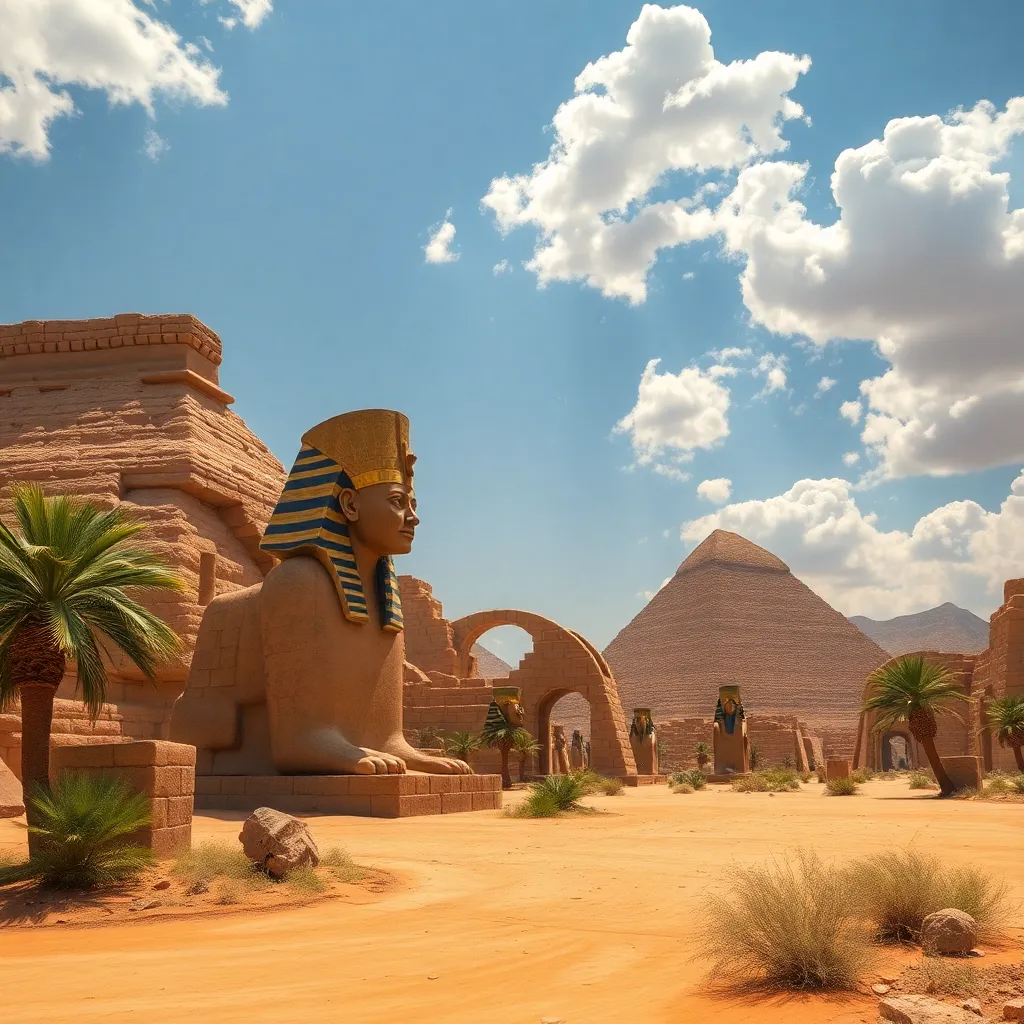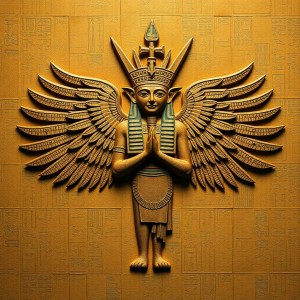Atenism and the Natural World: Nature in Akhenaten’s Teachings
I. Introduction
Atenism emerged as a radical religious movement during the reign of Pharaoh Akhenaten in ancient Egypt, emphasizing the worship of a singular deity, the Aten, represented as the Sun Disk. This monotheistic approach marked a significant departure from the traditional polytheistic beliefs that dominated Egyptian religion for centuries.
Akhenaten, originally named Amenhotep IV, is a pivotal figure in ancient Egyptian history, known for his transformative religious and cultural reforms. His reign, which lasted from approximately 1353 to 1336 BCE, was characterized by a unique vision that sought to redefine humanity’s relationship with the divine and the natural world.
This article aims to explore the intricate relationship between Atenism and the natural world, delving into how Akhenaten’s teachings reflected an appreciation for nature and its significance in both daily life and spiritual practice.
II. Historical Context of Atenism
Before Akhenaten’s reign, ancient Egypt was characterized by a rich tapestry of religious beliefs, with a pantheon of gods and goddesses that governed various aspects of life and nature. The worship of gods such as Ra, Osiris, and Isis was central to Egyptian culture and society, influencing everything from governance to agriculture.
With Akhenaten’s ascension to the throne, a transformative shift occurred. He established Atenism, promoting the worship of the Aten as the sole god and relegating the traditional deities to the background. This move was not merely theological; it was a profound alteration of the religious landscape, impacting art, architecture, and societal norms.
Key tenets of Atenism included:
- The belief in a single, all-encompassing deity, the Aten.
- The rejection of idolatry and the physical representation of gods.
- A focus on the sun’s life-giving properties and its connection to vitality and sustenance.
III. The Role of Nature in Atenism
The Aten, as the Sun Disk, held immense significance in Atenism. It represented not only a deity but also the source of life, illuminating the earth and nurturing all living beings. This emphasis on the sun highlights the broader relationship between divinity and nature in Akhenaten’s teachings.
In Atenism, nature was seen as a reflection of divine presence. The natural world, with its cycles and rhythms, was imbued with spiritual meaning. Sunlight was particularly revered, symbolizing purity, growth, and the sustenance of life. Akhenaten’s philosophy underscored the importance of sunlight, which was viewed as essential for both physical and spiritual nourishment.
IV. Natural Imagery in Akhenaten’s Art and Architecture
The artistic expressions of Akhenaten and his reign provide a profound insight into the natural world as perceived through Atenism. Temples and monuments constructed during this period prominently featured representations of the Aten, often depicted with rays extending toward the earth, offering life and blessings.
Flora and fauna played a significant role in Akhenaten’s artistic expression. Common themes included:
- Lotus flowers, symbolizing rebirth and purity.
- Birds and other wildlife, representing the vibrancy of life.
- Natural landscapes, such as gardens and rivers, emphasizing harmony with the environment.
Reliefs and sculptures from this era often portray idyllic settings, showcasing a deep appreciation for nature’s beauty. This artistic focus reflects the belief that the natural world was not just a backdrop for human activity but an integral part of divine worship.
V. Akhenaten’s Environmental Philosophy
Akhenaten’s teachings extended beyond spiritual beliefs to encompass a philosophy of living in harmony with nature and the cosmos. His views promoted ecological balance and sustainability, emphasizing the interdependence of all life forms.
Practices that emerged during his reign included:
- Gardening and the cultivation of plants as acts of devotion.
- Rituals that honored the cycles of nature, aligning human activities with the seasons.
- A rejection of wastefulness and a focus on resource conservation.
This philosophy contrasted sharply with the practices of previous and subsequent Egyptian dynasties, which often involved extensive resource exploitation and neglect for environmental balance.
VI. The Influence of Atenism on Daily Life
Atenism profoundly influenced the daily lives of those who adhered to its teachings. Rituals and practices were designed to connect individuals with the natural world, fostering a sense of reverence and responsibility towards the environment.
Key aspects included:
- The establishment of gardens as sacred spaces for worship and contemplation.
- Community rituals that celebrated the changing seasons and agricultural cycles.
- The integration of natural elements into daily practices, reinforcing the connection between the divine and the earthly.
Atenism also impacted social and economic structures, promoting agricultural practices that respected the land and its resources. This approach contributed to a more sustainable and harmonious way of life for many communities.
VII. Legacy of Atenism and Its Natural World Perspective
Despite the decline of Atenism following Akhenaten’s reign, its influence persisted in various forms. The religious reforms set forth by Akhenaten sparked debates about divinity and the natural world that would resonate through later religious and philosophical thought.
Modern interpretations of Akhenaten’s teachings often emphasize the relevance of his environmental philosophy, particularly in the context of contemporary discussions surrounding sustainability and humanity’s relationship with nature. Scholars and environmentalists alike find value in revisiting the principles of Atenism as a possible guide for addressing current ecological challenges.
VIII. Conclusion
In summary, Atenism represents a unique intersection of spirituality and nature, with Akhenaten’s teachings emphasizing the importance of the natural world as a reflection of divine presence. The appreciation for sunlight, flora, and fauna within this religious framework illustrates a profound understanding of the interconnectedness of life.
Reflecting on the relevance of Atenism today encourages a deeper exploration of ancient philosophies and their potential applications in contemporary society. By understanding the teachings of Akhenaten, we can gain insights into fostering a more harmonious relationship with the natural world, echoing the wisdom of ancient Egypt.




